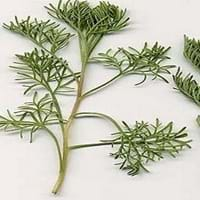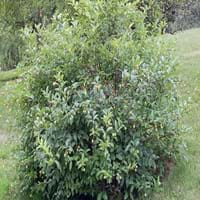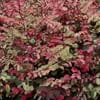Life Span
Perennial
Annual and Perennial
Origin
Southern Europe
South Africa
Types
not available
Not Available
Habitat
Temperate Regions
Boggy areas, Dappled Shade, Shady Edge, Sunny Edge, Woodland Garden Canopy
USDA Hardiness Zone
5-8
9-11
Sunset Zone
2b, 3a, 3b, 4, 5, 6, 7, 8, 9, 10, 11, 12, 13, 14, 15, 16, 17, 18, 19, 20, 21, 22, 23, 24
H1, 14, 15, 16, 17, 18, 19, 20, 21, 22, 23, 24
Habit
Upright/Erect
Upright/Erect
Minimum Height
Not Available
Minimum Width
Not Available
Flower Color
Yellow, Gray
Light Yellow, Ivory
Flower Color Modifier
Not Available
Not Available
Fruit Color
Non Fruiting Plant
Brown
Leaf Color in Spring
Gray Green
Green
Leaf Color in Summer
Gray Green
Green
Leaf Color in Fall
Gray Green
Green
Leaf Color in Winter
Not Available
Green
Leaf Shape
Long hair-like leaves
Egg-shaped
Plant Season
Spring, Summer, Fall
Spring, Summer, Fall, Winter
Sunlight
Full Sun
Full Sun, Partial Sun
Growth Rate
Medium
Medium
Type of Soil
Loam
Loam, Sand
The pH of Soil
Neutral
Acidic, Neutral
Soil Drainage
Well drained
Average
Bloom Time
Late Summer
Early Spring, Spring, Late Spring, Winter, Late Winter
Tolerances
Not Available
Wet Site
Where to Plant?
Ground, Pot
Ground, Pot
How to Plant?
Cuttings, Seedlings
Seedlings, Stem Cutting
Plant Maintenance
Medium
Medium
Watering Requirements
Average Water Needs, Keep the Soil well drained
Requires 4 to 8 inches of water above the soil line
In Summer
Lots of watering
Lots of watering
In Spring
Moderate
Moderate
In Winter
Average Water
Average Water
Soil pH
Neutral
Acidic, Neutral
Soil Type
Loam
Loam, Sand
Soil Drainage Capacity
Well drained
Average
Sun Exposure
Full Sun
Full Sun, Partial Sun
Pruning
Cut back old stems to the ground, Remove damaged leaves, Remove dead branches, Remove dead leaves
Prune in early summer, Remove damaged leaves, Remove dead branches, Remove dead leaves, Trim each shoot back to the first set of leaves
Fertilizers
All-Purpose Liquid Fertilizer, Complete balanced fertilizer
All-Purpose Liquid Fertilizer
Pests and Diseases
Free of serious pests and diseases
Red blotch
Plant Tolerance
Drought
Wet Site
Flowers
Insignificant
Yes
Flower Petal Number
Not Available
Not Available
Fragrant Flower
No
Not Available
Fragrant Leaf
Yes
Not Available
Fragrant Bark/Stem
No
Not Available
Foliage Texture
Medium
Fine
Foliage Sheen
Matte
Matte
Attracts
Not Available
Butterflies
Allergy
Skin irritation
Toxic
Aesthetic Uses
Farmland, small hedge, Wild gardens
Showy Purposes
Beauty Benefits
Not Available
Not Available
Environmental Uses
Air purification
Air purification
Medicinal Uses
Antiseptic, Digestive, Liver problems, Skin Disorders, Tonic
Astringent, Diaphoretic, Diuretic, Emetic, Febrifuge, Laxative, Odontalgic, Ophthalmic, Tonic
Part of Plant Used
Branch, Fibres, Flower Stalk, Gum, Leaves, Twigs
Bark, Fruits, Inner Bark, Root, Wood
Other Uses
Oil is used in mosquito repellents, Used for fragrance, Used to make hair tonic
Used for woodware
Used As Indoor Plant
No
No
Used As Outdoor Plant
Yes
Yes
Garden Design
Herb, Vegetable, Mixed Border, Rock Garden, Wall
Bog Garden, Cutflower, Dried Flower, Everlasting, Feature Plant, Mixed Border, Tropical
Botanical Name
ARTEMISIA abrotanum
BERZELIA lanuginosa
Common Name
lad's love , southern wormwood , old man , boy's love , appleringie , sitherwood
Buttonbush
In Hindi
southernwood
Buttonbush shrub
In German
Eberraute
Button Strauch
In French
aurone ou citronnelle
buttonbush arbuste
In Spanish
Artemisia abrotanum
arbusto buttonbush
In Greek
Artemisia abrotanum
Buttonbush θάμνος
In Portuguese
Abrótano
arbusto Buttonbush
In Polish
Bylica boże drzewko
Buttonbush krzew
In Latin
Southernwood
Frutex Buttonbush
Phylum
Magnoliophyta
Magnoliophyta
Class
Magnoliopsida
Magnoliopsida
Family
Asteraceae
Bruniaceae
Genus
Artemisia
Cephalanthus
Clade
Angiosperms, Asterids, Eudicots
Angiosperms, Asterids, Eudicots
Tribe
Anthemideae
Not Available
Subfamily
Asteroideae
Not Available
Number of Species
Not Available
Season and Care of Southernwood and Buttonbush
Season and care of Southernwood and Buttonbush is important to know. While considering everything about Southernwood and Buttonbush Care, growing season is an essential factor. Southernwood season is Spring, Summer and Fall and Buttonbush season is Spring, Summer and Fall. The type of soil for Southernwood is Loam and for Buttonbush is Loam, Sand while the PH of soil for Southernwood is Neutral and for Buttonbush is Acidic, Neutral.
Southernwood and Buttonbush Physical Information
Southernwood and Buttonbush physical information is very important for comparison. Southernwood height is Not Available and width Not Available whereas Buttonbush height is 365.76 cm and width 182.88 cm. The color specification of Southernwood and Buttonbush are as follows:
Southernwood flower color: Yellow and Gray
Southernwood leaf color: Gray Green
Buttonbush flower color: Light Yellow and Ivory
- Buttonbush leaf color: Green
Care of Southernwood and Buttonbush
Care of Southernwood and Buttonbush include pruning, fertilizers, watering etc. Southernwood pruning is done Cut back old stems to the ground, Remove damaged leaves, Remove dead branches and Remove dead leaves and Buttonbush pruning is done Prune in early summer, Remove damaged leaves, Remove dead branches, Remove dead leaves and Trim each shoot back to the first set of leaves. In summer Southernwood needs Lots of watering and in winter, it needs Average Water. Whereas, in summer Buttonbush needs Lots of watering and in winter, it needs Average Water.





